Stock Name
|
Market Cap (in Cr)
|
SBI Life Insurance Company
|
1,62,527.10
|
HDFC Life Insurance
|
1,48,716.30
|
GIC HOUSING FINANCE LTD
|
1,163.18
|
ICICI Prudential
|
1,08,260.20
|
LIC (Life Insurance Corporation of India)
|
5,80,476.90
|
Go Digit General Insurance
|
31,393.70
|
Star Health Insurance
|
28,229.70
|
The New India Assurance Company
|
32,290.90
|
Max Financial Services Ltd
|
42,951.43
|
Disclaimer: The market capitalisation values mentioned above were fetched on 3 January 2025. These values are subject to change based on various factors such as market conditions, company performance, and economic trends. Please refer to the SEBI or stock exchanges' websites to obtain the most current market capitalisation for any particular stock
Overview of leading insurance stocks in India as per analyst ratings
To better understand the insurance market, let’s look at some of the leading insurance sector stocks as per analyst ratings:
SBI Life Insurance Company was founded in 2000. The company offers a range of products including savings, protection, pension, and health solutions. It also has an extensive network with 1,040 offices and around 246,000 agents.
In terms of performance, the Annual Premium Equivalent (APE) grew by 17% year-over-year (YoY) for the financial year 2023-24. It was supported by a
- 28.4% YoY increase in Unit-Linked Insurance Plans (ULIPs)
and
- 45% YoY growth in group protection APE.
For the fourth quarter of FY24, the APE reached Rs 5,300 crore. By doing so, it marked a 17% YoY increase. Meanwhile, the New Business Premium (NBP) rose by 29% YoY to Rs 38,240 crore. However, the Value of New Business (VNB) margin for Q4 FY24 was 28.1%, which represents a decrease from the previous year.
HDFC Life Insurance was founded in 2000 and is headquartered in Mumbai. It offers a variety of products, including life insurance, ULIPs, term life insurance, endowment policies, and retirement plans.
In terms of performance, for the first nine months of FY24, the Annual Premium Equivalent (APE) grew by nearly 5% year-over-year (YoY). The Value of New Business (VNB) also increased by nearly 5% YoY and maintained a stable VNB margin of around 26.5%.
However, growth was impacted by changes in rules related to Surrender Value. Despite this, ULIPs showed strong growth at 88% YoY. For the fourth quarter of FY24, APE fell by 8.5% to Rs 4,730 crore, while New Business Premium (NBP) increased by 1.9% YoY to Rs 29,630 crore. But, the VNB margin for Q4 FY24 contracted by 520 basis points to 25.7%.
ICICI Prudential Life Insurance is promoted by ICICI Bank and Prudential Corporation Holdings. The company began its operations in 2001 and offers a wide range of insurance products, including ULIPs, term insurance, health insurance, retirement plans, and pension plans.
In terms of performance, for the fourth quarter of FY24, the Annual Premium Equivalent (APE) increased by 9.58% to Rs 3,615 crore. Meanwhile, New Business Premium (NBP) rose by 6.85% year-over-year (YoY) to Rs 18,081 crore.
The gross premium stood at Rs 43,236 crore, but the Value of New Business (VNB) margin for Q4 FY24 contracted significantly, with 4,281 basis points to 18.3%.
The Life Insurance Corporation of India (LIC) was established in 1956. It specifically focuses on spreading life insurance, particularly in rural and economically backward areas. The company offers a variety of products such as Saral Jeevan Bima, Bima Jyoti, Arogya Rakshak, and Dhan Rekha.
In terms of performance, for the fourth quarter of FY24, the Annual Premium Equivalent (APE) increased by 10.68% to Rs 21,180 crore. However, New Business Premium (NBP) decreased by 4.81% year-over-year (YoY) to Rs 1,64,926 crore.
Moreover, it must be noted that the gross premium collected by LIC in Q4 FY24 was Rs 1,52,553 crore, showing an increase from the previous year. However, despite this growth, the Value of New Business (VNB) margin for Q4 FY24 contracted by 1,714 basis points to 17.4%.
Insurance industry in India - A brief outline
The insurance industry in India has a rich history spanning over 200 years. Today, it comprises
- Public sector companies
- Private sector companies, and
- Digital insurance providers, known as Insuretech companies.
These Insuretech firms are relatively new but have quickly become disruptors in the market. That’s because they offer innovative, fast, and cost-effective services. Their emergence has substantially increased competition among traditional insurers and has pushed them to enhance their service delivery.
It is worth mentioning that technology is playing an increasingly crucial role in the Indian insurance sector. Nowadays, insurers are shifting towards digital platforms to:
- Improve customer experience
- Better manage operations
- Develop innovative products
As a result, it is now common for customers to purchase policies and file claims. Also, this digital transformation has allowed them to access customer support online.
In a startling fact, despite its long presence in the market, the insurance industry in India had a penetration rate of only about 4.2% in the financial year 2023. This is a relatively low figure considering India’s vast population. However, this low penetration rate also indicates that India's insurance sector has huge growth potential.
When it comes to regulation, the insurance sector is regulated by the Insurance Regulatory and Development Authority of India (IRDAI). The ultimate goal of IRDAI is to:
- Protect the interests of policyholders
and
- Promote the industry's growth and development
Furthermore, many insurance companies have opted to list themselves on stock exchanges in recent years, which has allowed them to raise the necessary capital. As a thumb rule, insurance companies are often considered good investment opportunities. Even renowned investor Warren Buffett has significant holdings in insurance companies which shows that insurance stocks carry the potential to generate substantial returns.









 Personal Loan
Personal Loan Check Eligibility
Check Eligibility Salaried Personal Loan
Salaried Personal Loan EMI Calculator
EMI Calculator Account Aggregator
Account Aggregator Credit Pulse Report
Credit Pulse Report
 Deals starting @99
Deals starting @99 Festive deals
Festive deals Min. 50% off
Min. 50% off
 Wallet to Bank
Wallet to Bank
 Easy EMI Loan
Easy EMI Loan Savings Offer
Savings Offer Smartphones
Smartphones Led TVs
Led TVs Washing Machines
Washing Machines Laptops
Laptops Refrigerators
Refrigerators Air Conditioner
Air Conditioner Air Coolers
Air Coolers
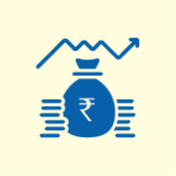 Loan Against Shares
Loan Against Shares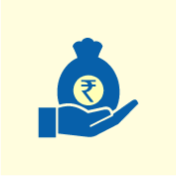 Loan Against Mutual Funds
Loan Against Mutual Funds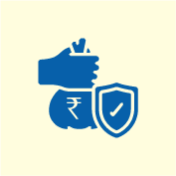 Loan Against Insurance Policy
Loan Against Insurance Policy ESOP Financing
ESOP Financing Easy EMI Loan
Easy EMI Loan Two-wheeler Loan
Two-wheeler Loan Loan for Lawyer
Loan for Lawyer Industrial Equipment Finance
Industrial Equipment Finance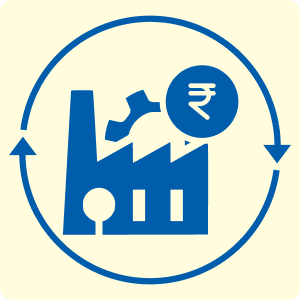 Industrial Equipment Balance Transfer
Industrial Equipment Balance Transfer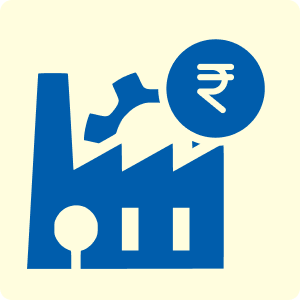 Industrial Equipment Refinance
Industrial Equipment Refinance Personal Loan Branch Locator
Personal Loan Branch Locator Used Tractor Loan
Used Tractor Loan Loan Against Tractor
Loan Against Tractor Tractor Loan Balance Transfer
Tractor Loan Balance Transfer
 Two-wheeler Loan
Two-wheeler Loan Bike
Bike Scooter
Scooter Electric Vehicle
Electric Vehicle Best Sellers
Best Sellers Popular Brands
Popular Brands

 Trading Account
Trading Account Open Demat Account
Open Demat Account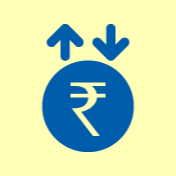 Margin Trading Financing
Margin Trading Financing Share Market
Share Market Invest in IPO
Invest in IPO All stocks
All stocks Top gainers
Top gainers Top losers
Top losers 52 week high
52 week high 52 week low
52 week low Loan against shares
Loan against shares
 Home Loan
Home Loan Transfer your existing Home loan
Transfer your existing Home loan Loan against Property
Loan against Property Home Loan for Salaried
Home Loan for Salaried Home loan for self employed
Home loan for self employed Home Loan EMI Calculator
Home Loan EMI Calculator Home Loan eligibility calculator
Home Loan eligibility calculator Home Loan balance transfer
Home Loan balance transfer
 Term Life Insurance
Term Life Insurance ULIP Plan
ULIP Plan Savings Plan
Savings Plan Family Insurance
Family Insurance Senior Citizen Health Insurance
Senior Citizen Health Insurance Critical Illness Insurance
Critical Illness Insurance Child Health Insurance
Child Health Insurance Pregnancy and Maternity Health Insurance
Pregnancy and Maternity Health Insurance Individual Health Insurance
Individual Health Insurance Low Income Health Insurance
Low Income Health Insurance Student Health Insurance
Student Health Insurance Group Health Insurance
Group Health Insurance Retirement Plans
Retirement Plans Child Plans
Child Plans Investment Plans
Investment Plans
 Business Loan
Business Loan Secured Business Loan
Secured Business Loan Loan against property
Loan against property Loans against property balance transfer
Loans against property balance transfer Loan against shares
Loan against shares Home Loan
Home Loan Loans against mutual funds
Loans against mutual funds Loan against bonds
Loan against bonds Loan against insurance policy
Loan against insurance policy
 Apply for Gold Loan
Apply for Gold Loan Transfer your Gold Loan with Us
Transfer your Gold Loan with Us Gold Loan Branch Locator
Gold Loan Branch Locator
 ULIP Plan
ULIP Plan Savings Plan
Savings Plan Retirement Plans
Retirement Plans Child Plans
Child Plans Free Demat Account
Free Demat Account Invest in Stocks
Invest in Stocks Invest in IPO
Invest in IPO Margin Trading Facility
Margin Trading Facility Fixed Deposit Branch Locator
Fixed Deposit Branch Locator
 Check your Credit Score
Check your Credit Score
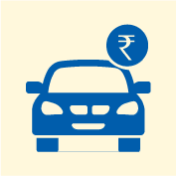 New Car Loan
New Car Loan Used Car Loan
Used Car Loan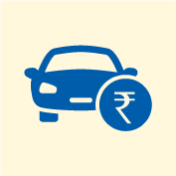 Loan Against Car
Loan Against Car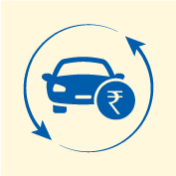 Car Loan Balance Transfer and Top-up
Car Loan Balance Transfer and Top-up
 Get Bajaj Prime
Get Bajaj Prime
 Mobiles on EMI
Mobiles on EMI Electronics on EMI Offer
Electronics on EMI Offer  Iphone on EMI
Iphone on EMI LED TV on EMI
LED TV on EMI Refrigerator on EMI
Refrigerator on EMI Laptop on EMI
Laptop on EMI Kitchen appliances on EMI
Kitchen appliances on EMI Washing machines
Washing machines
 Personal Loan EMI Calculator
Personal Loan EMI Calculator Personal Loan Eligibility Calculator
Personal Loan Eligibility Calculator Home Loan EMI Calculator
Home Loan EMI Calculator Home Loan Eligibility Calculator
Home Loan Eligibility Calculator Good & Service Tax (GST) Calculator
Good & Service Tax (GST) Calculator Flexi Day Wise Interest Calculator
Flexi Day Wise Interest Calculator Flexi Transaction Calculator
Flexi Transaction Calculator Secured Business Loan Eligibility Calculator
Secured Business Loan Eligibility Calculator Fixed Deposits Interest Calculator
Fixed Deposits Interest Calculator Two wheeler Loan EMI Calculator
Two wheeler Loan EMI Calculator New Car Loan EMI Calculator
New Car Loan EMI Calculator Used Car Loan EMI Calculator
Used Car Loan EMI Calculator All Calculator
All Calculator Used Tractor Loan EMI Calculator
Used Tractor Loan EMI Calculator
 Hot Deals
Hot Deals Clearance Sale
Clearance Sale Kitchen Appliances
Kitchen Appliances Tyres
Tyres Camera & Accessories
Camera & Accessories Mattresses
Mattresses Furniture
Furniture Watches
Watches Music & Audio
Music & Audio Cycles
Cycles Mixer & Grinder
Mixer & Grinder Luggage & Travel
Luggage & Travel Fitness Equipment
Fitness Equipment Fans
Fans
 Personal Loan for Doctors
Personal Loan for Doctors Business loan for Doctors
Business loan for Doctors Medical Equipment Finance
Medical Equipment Finance Secured Business Loan
Secured Business Loan Loan against property
Loan against property Secured Business Loan Balance Transfer
Secured Business Loan Balance Transfer Loan against share
Loan against share Gold Loan
Gold Loan Home Loan
Home Loan
 Engagement Zone
Engagement Zone Game Zone
Game Zone
 Savings Offer
Savings Offer Easy EMI
Easy EMI Offer World
Offer World 1 EMI OFF
1 EMI OFF New Launches
New Launches Zero Down Payment
Zero Down Payment Clearance Sale
Clearance Sale Bajaj Mall Sale
Bajaj Mall Sale
 Mobiles under ₹20,000
Mobiles under ₹20,000 Mobiles under ₹25,000
Mobiles under ₹25,000 Mobiles under ₹30,000
Mobiles under ₹30,000 Mobiles under ₹35,000
Mobiles under ₹35,000 Mobiles under ₹40,000
Mobiles under ₹40,000 Mobiles under ₹50,000
Mobiles under ₹50,000
 Articles
Articles
 Overdue Payments
Overdue Payments Other Payments
Other Payments
 Document Center
Document Center Bank details & Documents
Bank details & Documents Tax Invoice Certificate
Tax Invoice Certificate
 Do Not Call Service
Do Not Call Service
 Hamara Mall Orders
Hamara Mall Orders

 Check Loan Offer
Check Loan Offer Mobiles on EMI
Mobiles on EMI Trade directly with your Demat A/c
Trade directly with your Demat A/c ITR
ITR My Garage
My Garage
 Live Videos - Beta
Live Videos - Beta
 Savings Offer
Savings Offer Smartphones
Smartphones LED TVs
LED TVs Washing Machines
Washing Machines Laptops
Laptops Refrigerators
Refrigerators Air Conditioners
Air Conditioners Air Coolers
Air Coolers Water Purifiers
Water Purifiers Tablets
Tablets Kitchen Appliances
Kitchen Appliances Mattresses
Mattresses Furniture
Furniture Music and Audio
Music and Audio Cameras & Accessories
Cameras & Accessories Cycle
Cycle Watches
Watches Tyres
Tyres Luggage & Travel
Luggage & Travel Fitness Equipment
Fitness Equipment Tractor
Tractor Easy EMI Loan
Easy EMI Loan
 vivo Mobiles
vivo Mobiles OPPO Mobiles
OPPO Mobiles Xiaomi Mobiles
Xiaomi Mobiles Sony LED TVs
Sony LED TVs Samsung LED TVs
Samsung LED TVs LG LED TVs
LG LED TVs Haier LED TVs
Haier LED TVs Godrej Refrigerators
Godrej Refrigerators Voltas Washing Machines
Voltas Washing Machines















